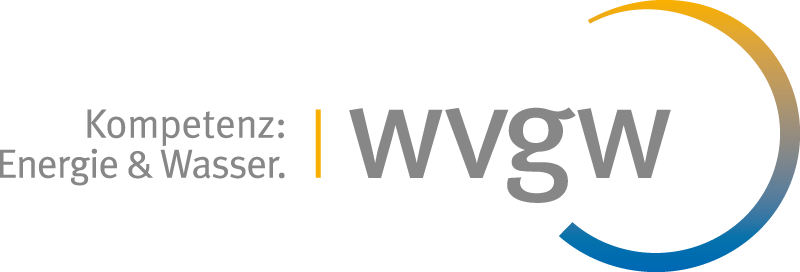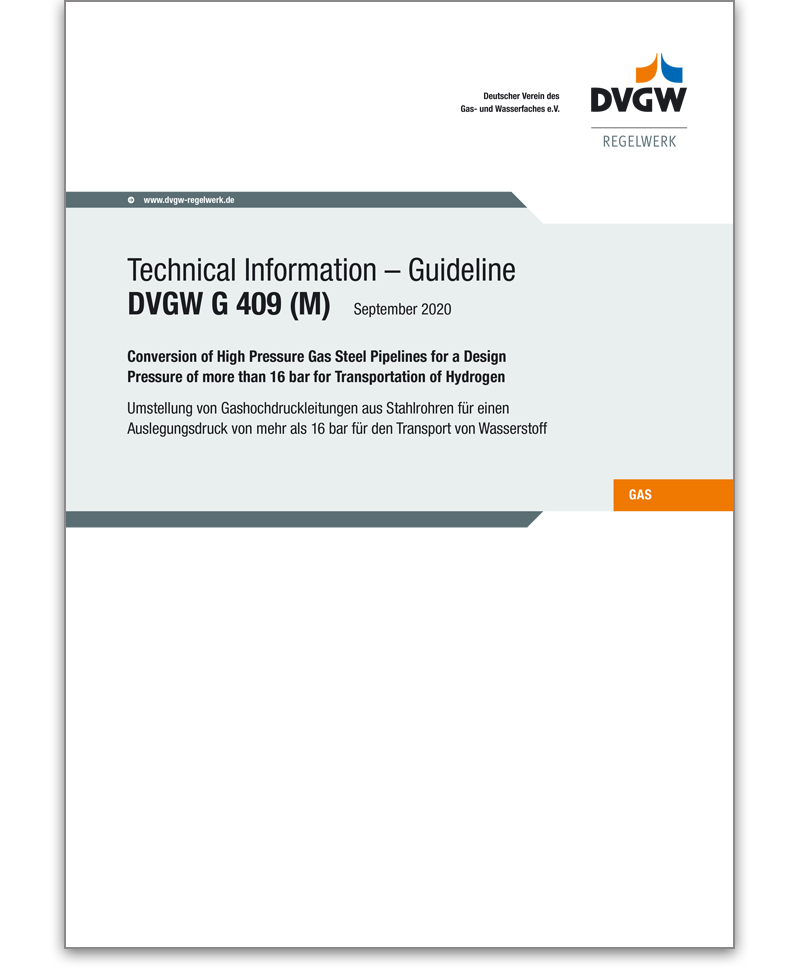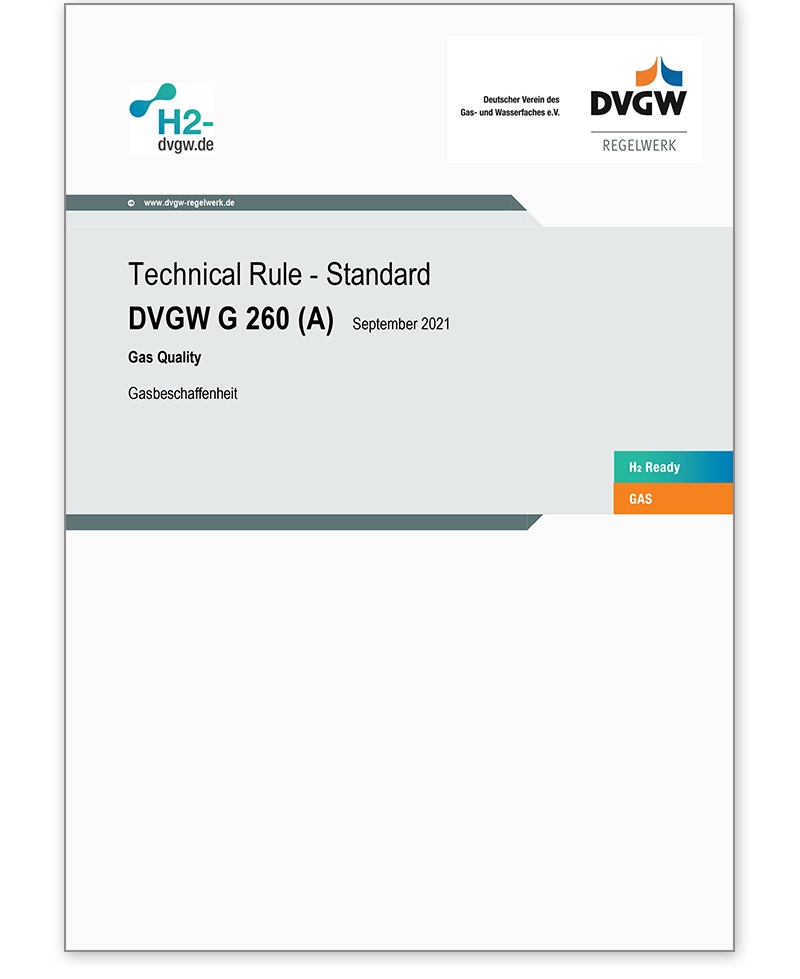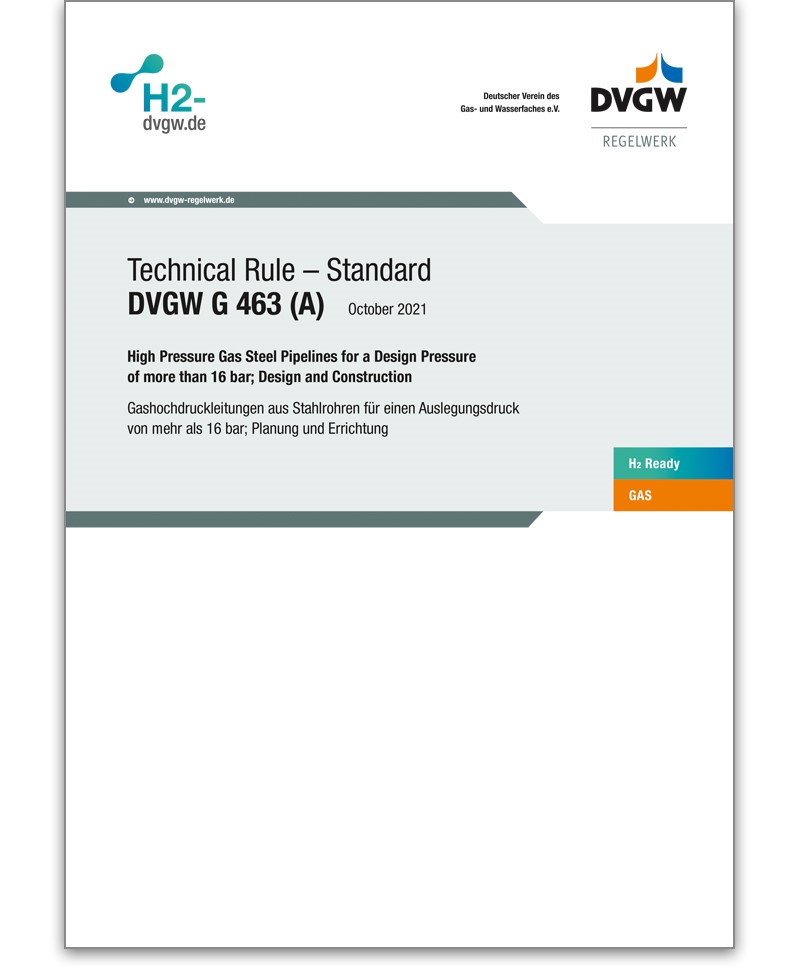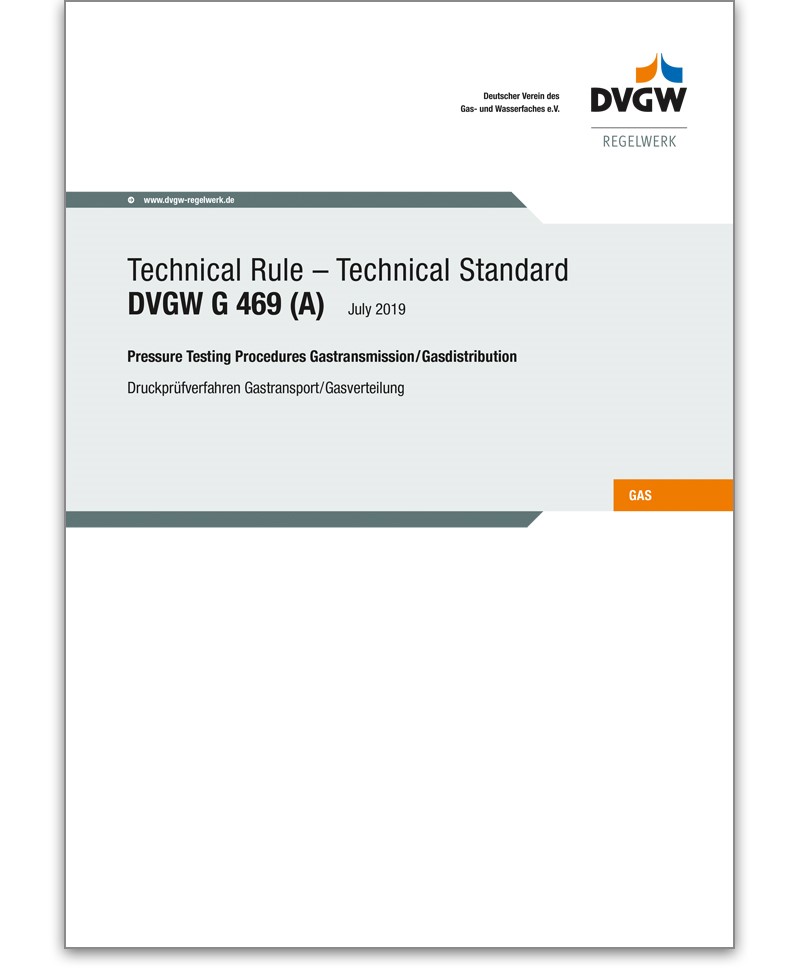G 409 Technical Information - Guideline 09/2020 -pdf-file-
Conversion of High Pressure Gas Steel Pipelines for a DesignPressure of more than 16 bar for Transportation of Hydrogen
- Herausgeber/Verlag: DVGW
- Format: 9 pages, available as pdf only
- Ausgabe: 1st edition 2020
- Hinweis: The german edition of this Guideline G 409 you will find here.
- Verkaufseinheit: 1
- Mindestabnahme: 1
- Artikel-Nr.: 512438
39,92 €*
This DVGW Guideline G 409 applies to the conversion of steel gas pipelines for design pressures of more than 16 bar with welded joints for the transmission of gases of the 2nd gas family as specified by DVGW Code of Practice G 260 to hydrogen with at least 98 % by volume (in accordance with standard ISO 14687 of Groups A or D). The design pressure DP of the pipeline remains unaffected.
Details on the gas quality of the hydrogen meant for transportation will be included in DVGW Code of Practice G 260 in the near future. After the revised Code of Practice G 260 has been passed into force, it shall be the preferred standard rule for consultation on matters of hydrogen gas quality.
Other installation components such as valves, pig traps, regulating stations do not fall under this Guide-line’s purview and must be examined and evaluated separately.
A pipeline that transports even small amounts of hydrogen shall, if necessary, already be evaluated sepa-rately. For such cases, this Guideline’s specifications may be applied mutatis mutandis.
For gas pipelines made of other material, steel pipes with detachable joints, or gas pipelines with a design pressure lower than 16 bar, this Guideline’s specifications may be applied mutatis mutandis.
When planning the conversion of a gas pipeline that transports gases that do not correspond with the specifications of DVGW Code of Practice G 260, this Guideline may be applied mutatis mutandis if the specific characteristics of these gases are taken into account and other applicable regulations, if they exist, are adhered to.
Preface
1 Scope of Application
2 Normative References
3 Terms
3.1 Conversion
3.2 Technical Experts
4 Testing
4.1 General
4.2 Documentation of Construction, Operation and Maintenance
4.3 Gas Pipeline Hydrogen Suitability
4.4 Sampling
4.5 Expert Report
4.6 Commissioning
4.7 Operation
4.8 Concluding Certification
Further Reading
